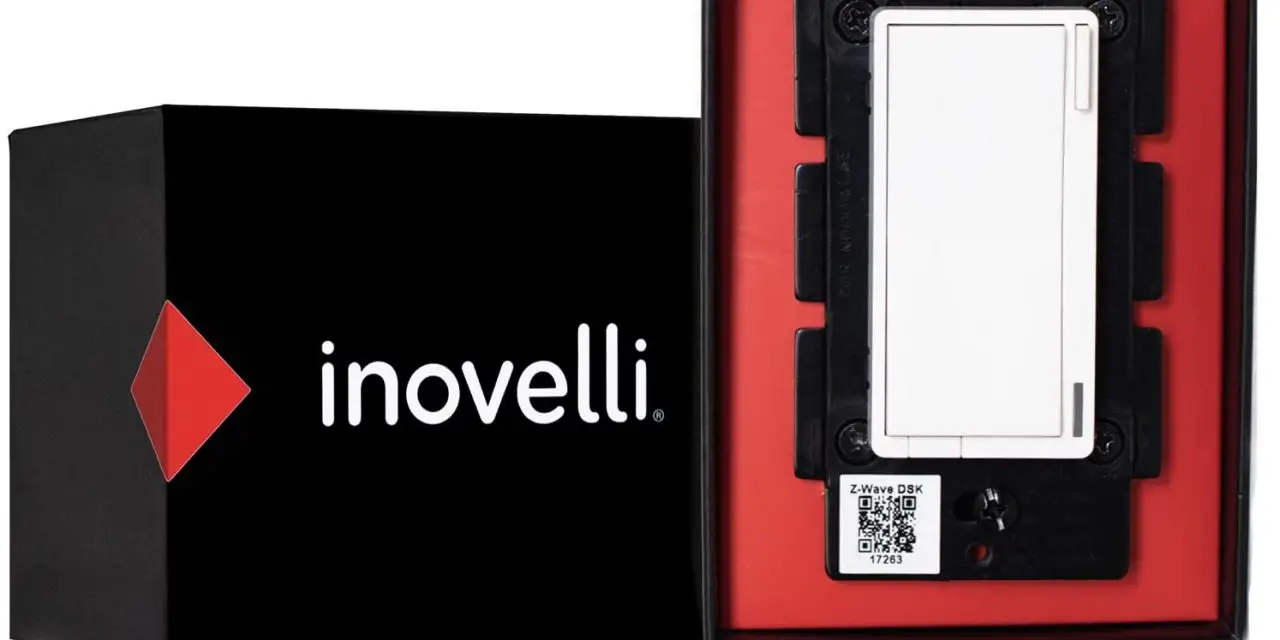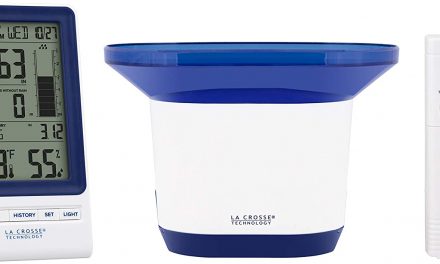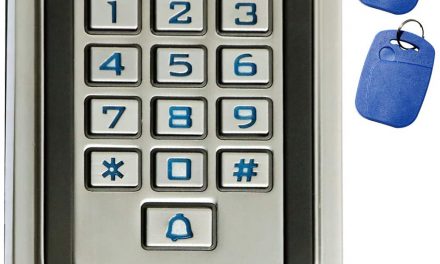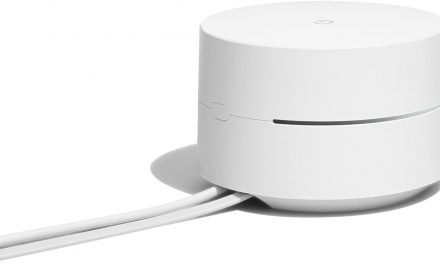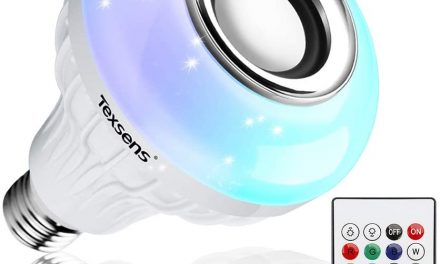When looking for a Z-Wave switch, you need one that operates very quickly, blends in with your home’s décor and is made from high quality materials. In this buying guide, we will explore the top ten best Z-Wave Switches that are minimalistic, can be used as repeaters to extend the range of your Z-Wave network by up to 150 feet, are compatible with voice assistants and can be used with a wide variety of smart home automation hubs. Which of these Z-Wave switches is better than the rest? We will have a look at each Z-Wave switch and bring out all the features present to help you make a judgment as to which Z-Wave switch best suits your unique needs. In addition, we will include details about which Z-Wave switch best suits the needs of those buying on a very tight budget.
Alternatively, just skip to the best Z-Wave Switch on Amazon.
Table of Contents
Best Z-Wave Switch Comparison Table
List of 10 Best Z-Wave Switches
1. Inovelli Z-Wave Switch

This product is a Z-Wave switch that has won several prestigious awards and certifications. This validates its quality, as well as the service rendered by the manufacturer. It boasts the use of AES-128 Encryption, UL 1023 compliance, anti-jamming technology and the most advanced security features that guarantee that your data is safe and will not be used for any nefarious purposes. It has a signal detector that shows whether the switch is within the range of the Z-Wave hub. This signal detector shows a Red light if the device is out of range and Green if the device is in range. It allows for customization through the use of a configuration button which eliminates the need for a hub to change the internal settings of the switch. It is compatible with most hubs, and over 3,000 products produced by over 700 companies. These include the major Z-Wave hubs such as SmartThings, Hubitat, Vera, HomeSeer, and Ring. In order to user voice control, you need to ensure that you have a Z-Wave compatible hub as the device does not directly pair to Alexa and Google Home. It also acts as a signal range extender. This security feature is quite attractive and could possibly make it the best Z-Wave switch out there.
You do need to ensure that your home has a neutral wire before purchasing this device as it requires a neutral wire. It also needs a line (Hot) wire, and it cannot be installed at the end of a 3-Way where there is no line. A few users feel that the switch responds a bit slowly. This is the best Z-Wave Switch on the market.
2. Leviton DD0SR-1Z 120VAC Decora Digital/ Decora Smart Coordinating Switch Remote
This is a Z-Wave switch that comes at quite an attractive price. You are guaranteed not to leave a gaping hole in your pocket with this device. This device is a coordinating switch remote that can be used for coordinating multi-location switching. It is compatible with Z-Wave, Wi-Fi or HomeKit. It is important to note that there are two versions – Decora Smart deals with Z-Wave, Wi-Fi and HomeKit, and Decora Digital deals with Bluetooth so make sure you buy the Decora Smart if you want a Z-Wave switch. It comes with an alternative wiring method where a neutral wire is not present.
This product does not come with an LED indicator light which can make it rather difficult to find in a dark room. In addition, the switch boxes’ housing is usually too large for many switch boxes. This is the cheapest Z-Wave Switch on the market.
3. Zooz Z-Wave Plus On Off Wall Switch ZEN21 (White) VER. 3.0
This is a Z-Wave switch that has smart skills to provide status updates, as well as to restore its on/off status after a power outage. It also comes with scene control on selected hubs. You can easily control this device using a mobile device or computer, but you will need to have a Z-Wave gateway controller to do this. There is no need to have an add-on switch as it works with regular 3-way switches. Installation is quite and easy as all you need to do is to tap the upper puddle three times while the hub is in inclusion mode. This will instantly add it to your Z-Wave network. It acts as a signal repeater. It works with a wide selection of Z-Wave hubs such as SmartThings, VeraPlus, Hubitat and Fibaro Home Center Lite. It also allows for integration with Alexa to control the devices present using your voice. It is important to note that this device requires the neutral wire. It’s one of the best Z Wave Switches on the market.
4. Honeywell UltraPro Z-Wave Plus Smart Light Switch
This Z-Wave plus switch is from the manufacturing giant, Honeywell. If you know Honeywell, then you probably know that they produce devices that are usually reliable and are used in manufacturing and processing industries where their components usually last for decades. This device is compatible with a wide range of light bulbs, as well as other devices. It allows for features such as events scheduling. It is an in-wall switch which is easy to install – the manufacturer boasts that you can take just 15 minutes to replace a typical in-wall switch. It can be used to wirelessly control and schedule lights and other devices. This can be done from a smartphone, PC, tablet or a Z-Wave remote. You can use an Amazon Echo to control this device. In addition, this product requires a Z-Wave certified hub. This includes, but is not restricted to the following: SmartThings, Honeywell, Ring, Trane, Nexia, Fibaro, Vera, and ADT. These attractive features made it hard for us not to include it in the top 10 best Z-Wave switches.
You do need to note that this product does not come with a wall plate or a neutral wire. In addition, you need to check if the wiring present in your home is compatible with this product as the older homes may not have neutral wires.
5. GE Enbrighten Z-Wave Plus Smart Light Switch 14292

This is yet another product from General Electric. It is quite similar to the GE 14291 Enbrighten Z-Wave Plus Smart Light Switch. It costs a bit more and that is one of the differences between the two devices. It is quite easy to install. Just like the GE 14291, this product requires a neutral wire, and it does not come with a wall plate. It can be controlled remotely through the use of your smart phone. It can control indoor and outdoor features, and it can also act as a signal repeater to extend your range by up to 150ft. It can be voice controlled using the Google Assistant and Alexa. It also works with the following Z-Wave hubs: Honeywell, HomeSeer, SmartThings, Nexia, Vera, and others. It also allows for up-to four add on switches to be connected to it. You do need to note that just like the cheaper GE 14291, this product comes with no wall plate and no neutral wire
6. GE 14291 Enbrighten Z-Wave Plus Smart Light Switch
This is a Z wave switch that has quite an attractive paddle style design. It is quite easy to install and any DIY enthusiast will be able to quite easily install this device into their home. It requires an indoor in wall installation with hard wired connections. It is important to note that this device requires a neutral wire, so don’t forget that when you install it in your home. It works with a wide variety of lights which include: halogen bulbs, Light Emitting Diode (LED) bulbs, Compact Fluorescent Lamps (CFL) lights, and incandescent lights. The device is not restricted to light bulb operation only. You can use this device to control indoor or outdoor fixtures, and it acts as a repeater as it allows signals from the Z-Wave Hub and other Z-Wave devices to be transmitted through it. This allows you to extend your range to up to 150ft which makes sure that all of your devices are covered. It works perfectly on its own or can be integrated into a multi-switch set up, with the provision of adding up to four add on switches to it. It is hassle free device that can be controlled from your smartphone, and if you are old-school you can simply use the manual on/off switch. It also allows for voice control using Alexa and the Google Assistant. This is one of the best Z-Wave switches on the market.
You do need to note that to use this device you do need a Z-Wave certified hub, and the wall plate is not included.
7. VIZIA RF + LOW VLT DIMMR
This Z-Wave light switch is designed to support a wide variety of devices such as dimmable CFLs, Halogens, LEDs, and magnetic lighting loads. It offers universal lighting support as well as security and beaming. It is equipped with highly advanced Vizia RF technology which is capable of producing dimmer features with up to 49 different fading rates and transient surge suppression. It has a lovely design which looks quite futuristic. It is universally supported by most security and home automation systems. It provides local and remote dimming, which may be useful for controlling your lighting when you are away from home. It is scene capable. It also works with Amazon’s Alexa although you will need a hub for this functionality.
This device does have the problem that you might not be able to completely switch of the light using this switch, and it requires the use of a neutral wire.
8. GoControl WD500Z-1 Z-Wave 500-Watt Wall-Mount Dimmer Switch
This product can be used to turn lights off or on, control the dimming, as well as to control operations remotely. It is compatible with a wide variety of Z-Wave certified devices. It fits in a standard J-box. It has a capacity of 500 watts so it will definitely meet your power needs. It can act as a repeater to extend the Z-Wave network by 130 feet. The switch comes in a beautiful design. It supports the association command class that can be used to control other Z-Wave devices. This device requires a neutral connection and users complain about it because it starts buzzing unless you keep it on full power
9. HomeSeer HS-WD100+ Z-Wave Plus Scene-Capable Smart Dimmer Switch
This is a Z-Wave switch that supports Z-Wave S2 Security. This means this smart dimmer switch device can be used to control some security systems present in the home. It has a 600 watt capacity which means that it is more than capable of handling most lighting loads. It is very easy for you to add up to 10 unique scenes by using the series of multi-tap and press and hold sequences. It can also be used together with other home automation devices such as the Alexa, SmartThings, Google Home and it is IFTTT compatible. It provides the instant status as it reports on-off-dim status to the controller when this switch is manually operated. It is important to note that this device needs a compatible hub to work with devices such as Alexa.
The device uses a lightweight switch that some customers find to be cheap, and there is a complaint about flickering and inconsistent behavior with some of the lights such as the LEDs.
10. LINEAR GoControl, WS15Z-1, Zwave Wall Mount Switch
This is another Z-Wave Switch that uses a streamlined paddle design. It can be installed anywhere where power is available and is designed to handle loads of up to 600 watts (incandescent) for permanently installed lighting. It has the advantage that it does not require a neutral connection which is quite handy. It allows you to control all of your Z-Wave enabled switches using a “virtual switch.” It comes with a wall plate, which is quite handy as you do not have to go shopping for a wall plate that suits this device. It has a replaceable trim ring which allows you to choose the trim ring that suits your décor. It acts as a repeater, which allows for it to extend your network by 130 feet to reach other elements of your Z-Wave network that would otherwise be out of range of the Z-Wave hub. It is compatible with all other Z-Wave products such as motion detectors, switches, thermostats, and security devices.
This product does have a hard to configure 3 way switch. This product could have easily been the best Z Wave switch, but the very many customer complaints about the warranty provided by the manufacturer have made us advise you to tread with caution. In addition, this is a Z-Wave switch not a Z-Wave plus switch.
Best Z-Wave Switch Brands
Our top picks for this section are General Electric (GE), Inovelli and Honeywell. General Electric is a well reputable company which produces quality products so it should be no surprise that they we’ve mentioned them here. Honeywell is also a manufacturing giant and usually produces reliable devices that last for years or even decades on end. Inovelli produced the Z-Wave switch that won several prestigious awards and certifications. In addition to that, the customers appear to love this device and we are yet to find a negative review.
Best Z-Wave Switch
Our award of the best Z-Wave switch goes to the Inovelli Z-Wave Switch. This is because of the customers appear to love it so much, and we are yet to find a negative review. In addition, it has a design that shows that it was well thought out, it acts as a signal range extender and it is compatible with virtually all of the major Z-Wave hubs.
Here are a few details that made this product stand out:
- Great security due to the use of AES-128 Encryption
- Good quality device
- Excellent customer service
- Certification & prestigious awards
- Signal range extender
- Value for money
Cheapest Z-Wave Switch
This goes to the Leviton DD0SR-1Z 120VAC Decora Digital/ Decora Smart Coordinating Switch Remote. This device comes at a very attractive price and is a coordinating switch remote. It comes with an alternative wiring method where a neutral wire is not present. It is cheap, and comes with enough features to make it decent.
Here are its key features:
- Very attractive price
- Neutral wire workaround
- Wide compatibility
- Control lights from multiple locations
What is a Z-Wave Switch?
A Z-Wave switch is a home automation device that uses the Z-Wave technology in order for it to control Z-Wave compatible devices. These are mainly lights, but they can also be appliances. The Z-Wave switch is used turn on and off the multiple lights or appliances. This is quite a handy feature when you want to turn all of your exterior lights without having to turn on each device.
Why do you need a Z-Wave Switch?
Reliability
The Z-Wave technology used by the Z-Wave Hub operates on the 800-900 MHz range which is relatively uncongested. Without the competition for resources, the Z-Wave network is able to create and maintain strong connections. This gives you an extremely dependable communication protocol which guarantees that each time you flick your light switch, the device you want to control will receive the command.
Security
Z-Wave uses the AES 128 encryption standard. This is an encryption standard used by institutions that need a great deal of privacy such as banks and government organizations that keep sensitive data. This means that you, the home owner are guaranteed of safety from hackers.
Cost
It is quite easy to get a Z-Wave system that does not cost you hundreds of dollars. You can buy a few devices at a time and add more devices when the need arises. Adding more products is incredibly easy, and you do not need to worry about your Z-Wave system getting over congested.
Interoperability
Z-Wave devices are made to be interoperable. This means that you do not have to worry about your switch being incompatible with other Z-Wave products. This is because the Z-Wave technology is operated and run under the Z-Wave alliance which oversees the certification of all the devices that use this technology. So no more headaches.
Installation
It is very easy to add your device to an existing mesh network. With the introduction of Z-Wave plus, all you need to do is to plug and play! It is that simple.
Factors to consider when buying Z-Wave Switches
Neutral
Most of the lighting systems that are present do not have a neutral wire that is available at the light switch. These are commonly referred to as “2-Wire” systems. You need to check the system that you have at your home because many Z-Wave switches must have a neutral wire.
Box
You need to check the dimensions of your back box, as well as the dimensions of the Z-Wave switches. Most of the Z-Wave switches are slightly deeper than the standard light switches. It would be a very good idea to use 45mm deep back boxes in order to ensure that the Z-Wave device is accommodated together with all of the wiring that comes with it.
Bulbs
This is an important point to consider with dimmers. Make sure that your light is dimmable. If you use a dimmer with non-dimmable bulbs, you can end up damaging both the dimmer and the bulb. Dimmable bulbs include incandescent, halogen and LED bulbs.
Hub
You need to consider the features that you would like to use with the Z-Wave switch. In most, if not all cases, you will need to consider buying a hub to complement the Z-Wave switches you have.
2-way and Multi-way Light Circuits
In general, the Z-Wave switches and dimmers are compatible with 2-Way lighting circuits. These are systems in which one light circuit is controlled by two or more light switches. If using a Z-Wave dimmer or switch module, you only need one module as this is a single circuit. You will need your electrician to consult the Z-Wave lighting switch wiring guide.
How does a Z-Wave Switch Work?
Well to fully explain this, we need to get to know how the Z-Wave technology works. In general, a Z-Wave switch works by using the Z-Wave technology to control devices such as lightbulbs, and some AC appliances. It allows you to switch on multiple devices at once, and to switch off multiple devices at once. Let us explain more about the Z-Wave technology for you to get a better picture.
How does Z-Wave Technology Work?
Z-Wave is a wireless communications protocol that is primarily used for home automation. It uses a mesh network which utilizes low energy radio waves to communicate from one appliance to the other. This protocol is a propriety technology that was developed by the company Zensys.
The Z-Wave technology operates on the 800-900MHz radio frequency range. As you know, all wireless devices have a frequency range that they operate in. Your Wi-Fi devices for example operate in the 2.4 GHz and 5GHz bands. This may seem as an irrelevant point, but it is actually a key strength of the Z-Wave technology. This is because in smart home wireless networking, there are various technologies and standards that are competing to become the technology/standard of choice. The standards are: Wi-Fi which uses the 2.4 GHz band, ZigBee which operates on the 2.4GHz band and Bluetooth which also uses the 2.4 GHz band. This means that this band is heavily congested, and this therefore means the devices that use it are much more susceptible to interference. The Z-Wave band is relatively decongested which means that the Z-Wave devices are much less susceptible to interference.
It is important to note that the exact frequency that the Z-Wave device operates at depends on the country that the Z-Wave device is going to be used in. For instance, the US uses 908.40, 908.42 and 916MHz; whereas the UK and Europe uses 868.40, 868.42, 869.85MHz. It is imperative that you make sure that the Z-Wave device that you are buying is designed for your region.
The low frequency range also has other advantages associated with it. In general, the higher the frequency, the higher the bandwidth and the data transmission rate. This therefore means that technologies such as Wi-Fi are able to transmit a lot more information than the Z-Wave technology. The higher speed and bandwidth comes at a cost.
The higher the frequency, the less the radio frequency signals are able to penetrate objects. This means that the devices using the Z-Wave technology which uses the lower frequency are less affected by the presence of objects such as walls. The data transmission rate is much lower than that of other technologies, but this is not a big problem since the devices that use Z-Wave transmit much less data than those that use other technologies.
Z-Wave uses a source-routed mesh network architecture. In such networks what happens is that the devices (commonly referred to as nodes) that are present in the network use the wireless communication channel (Z-Wave) to send control messages that are then sent to the neighbouring devices in a wave like fashion. This is very much unlike the Wi-Fi technology in which the devices have to connect to a central hub. The control messages and signals can hop from one device to another in the mesh network.
The maximum number of hops that is permitted in this technology is 4 hops. This allows for indirect communication which adds a layer of flexibility to the network. This means that the devices in the mesh network can send messages to each other when they are not in direct range. In mesh networks the more devices that are added, the stronger the mesh network. Now that we know the basics of Z-wave, let us have a look at the new improvements made to Z-Wave
Z-Wave Plus
This is a certification program that is used to help customers to identify products that use the latest technology in Z-Wave. This is commonly referred to as the “Next Gen” Z-Wave hardware platform, 5th Generation, Gen5, 500 series or Z-Wave for Gen5.
This is a new technology that improves on the original specifications present in Z-Wave. It makes use of the latest advancements in technology in order to improve this standard, Z-Wave. It brings a host of features that we will explore below.
Range
The range in this new technology has been increased. In traditional Z-Wave devices, the range is around 40 feet, but in this new technology the range is increased to around 50 feet.
Size
When it comes to technology, the smaller the better. Z-Wave plus devices are smaller. This therefore means that they are more efficient and as a result they require much less power to operate. A new Z-Wave plus device can last an astonishing 10 years on a single disc style battery.
Updates
Now your Z-Wave devices are able to get Over The Air (OTA) updates. This technology now allows for you to update all your devices quickly and easily, keeping them running as efficiently as possible.
Radio Frequency (RF) Channels
In this technology, there are three RF channels. These channels are designed and developed to improve the security of your Z-Wave devices. In addition they increase the bandwidth present.
Self-Heal
This term sounds like a scene from a Sci-fi movie where there are terminator like devices with nano-particles that automatically repair it no matter what damage occurs to it. Well, we aren’t able to do that yet, and this isn’t what the term “self-heal” means. This term refers to the ability of the Z-Wave device to identify an error and recover the device through a series of self-diagnostics. This happens so quickly that you won’t even realize that there was a problem in the first place.
Plug ‘n play
The new and improved technology is designed and developed to help make your life easier as you just have to plug in a Z-Wave plus device and it automatically gets added to the mesh network.
Compatibility
Well this new technology is fully compatible with its predecessor. This means that all your Z-Wave devices are fully compatible with Z-Wave plus, and all the Z-Wave plus devices are compatible with the Z-Wave devices.
It is important to note that Z-Wave devices can be connected to only one primary controller from which the device receives and responds to commands. It is not currently possible to have the device in the mesh network to respond to two hubs.
Conclusion
This article about the best Z-Wave switches available in the market has given a very thorough explanation about the Z-Wave technology. We began by having a look at the 10 best Z-Wave switches that are currently available in the market. We then proceeded to give our judgement of the best Z-Wave switch and the cheapest Z-Wave switch. We ended with a thorough explanation of the Z-Wave technology and gave all the details you may find important.
Which Z-Wave switch are you going to buy today? Check out the best Z-Wave switch on Amazon.

